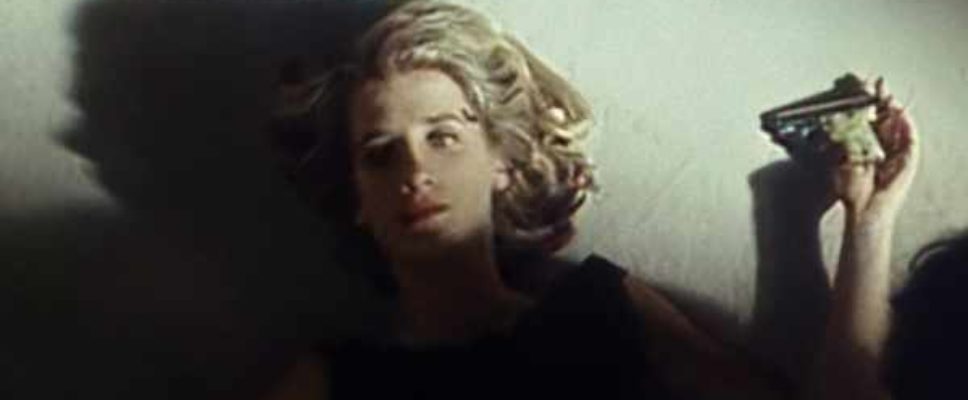Teresa Reviews Murder in the Mews (1989): Justice for Whom?
Fidelity to text: three and 1/2 guns.
![]() This adaptation wasn’t perfectly faithful to the urtext. It fleshed out the story in multiple ways (good) but omitted critical sections to make Jane Plenderleith’s decision more self-sacrificial in a completely unbelievable way (bad). That woman wanted revenge and yet Poirot appealed to her higher nature and she agreed? Um, no. She done him wrong because he had it coming. The ending didn’t work for me.
This adaptation wasn’t perfectly faithful to the urtext. It fleshed out the story in multiple ways (good) but omitted critical sections to make Jane Plenderleith’s decision more self-sacrificial in a completely unbelievable way (bad). That woman wanted revenge and yet Poirot appealed to her higher nature and she agreed? Um, no. She done him wrong because he had it coming. The ending didn’t work for me.
Quality of movie on its own: three and 1/2 guns.
![]()
![]()
![]()
We open with one of those lovely scenes of bygone days that you probably wouldn’t get to experience today in modern London. I know that they still celebrate Guy Fawkes Day. There’s a little rhyme to make sure no one in England forgets Guy Fawkes tried to blow up Parliament:
Remember, remember the Fifth of November,
The gunpowder, treason, and plot,
I know of no reason
Why the gunpowder, treason,
Should ever be forgot.
Guy Fawkes, Guy Fawkes, t’was his intent
To blow up the king and Parliament.
However, I doubt that they let little kids play with those kinds of fireworks anymore and especially unsupervised. They’ll blow their hands off or lose an eye, lawsuits swiftly to follow. The opening also provides a chance for Hercule Poirot to demonstrate his ignorance of English culture which is forgivable. He didn’t grow up burning the Guy in effigy on an annual basis in a spasm of culturally approved violence. For Hastings not to know when questioned by Poirot, however, demonstrates that our captain is an idiot.
Our captain is more concerned with his motor car. He later demonstrates his fascination with his car by getting underneath it to fix it himself.
The Guy Fawkes celebration provides cover for murder, naturally. All those fireworks and bonfires and screaming make a lot of noise, more than enough noise to cover a stray gunshot. It’s even commented on, and then of course a body is discovered. A lovely blonde is found dead in a simply stunning Art Deco flat; pause the DVD frequently to fully appreciate the two-level suite, the décor, and the array of objets d’art. Wow. These ladies were not poor. A pistol is suspiciously placed in the dead blonde’s hand to make murder look like suicide. There are two people’s cigarettes in the ash trays and a man’s cufflink on the carpet to further indicate whatever happened, it wasn’t suicide.






It’s clear from Major Eustace’s occupation (running a questionable bar) and his reaction to the police that he’s got something to hide. Quite a lot of somethings, in fact, at least according to the source material. Sadly, Major Eustace’s checkered past is completely omitted in favor of the innuendo provided by his surroundings.
Poirot returns to following Jane Plenderleith around, even to following her on the golf course. He discovers many broken golf clubs in the undergrowth, which is to be expected. He does not expect to catch Jane tossing an attaché case into a lake that normally only receives errant golf balls. This is when he works out what she’s really trying to hide. It’s not the attaché case. It’s Mrs. Allen’s left-handed golf clubs.


Murder in the Mews is the first time Agatha worked with this trope. Later, she expanded it significantly in Towards Zero. Poirot also spends some time lecturing Jane about using murder to punish a culprit who was guilty of criminal behavior. He strongly disapproves of murder and does not believe it can ever be justified. You’ll recall he does this in Murder on the Orient Express where he reaches a different conclusion.
Here, he gets Jane to admit she lied.


Yet Poirot lectures her on murder and this woman, who’s got vengeance in her heart over her friend’s dreadful death, and she gives up easily?
I don’t think so.
This was the change the screenwriter made that shouldn’t have been made. He didn’t spell out why she should change her mind. In the short story, Poirot and Inspector Japp tell Jane Plenderleith that Major Eustace is in jail and will stay there for some time. Not because of blackmail, but because of his other criminal activities, nefarious behavior that came to light because of the murder investigation. Jane doesn’t need to perjure herself to get revenge for her friend’s tragic death. The Crown will take care of it for her.
Major Eustace won’t dance the hemp fandango, but he’ll spend years in jail nonetheless.
I could buy Jane Plenderleith accepting Major Eustace’s prosecution as being good enough, especially if she wants to avoid charges of her own for interfering with a criminal investigation. I cannot accept the ending I watched, where she says “okay” without knowing that Major Eustace would get his just desserts. She wanted revenge and punishment and didn’t get either.
It’s still a good episode; well-paced, well-acted, fantastic clothes and plenty to watch. I’ll watch it again, even knowing that the scriptwriter pulled his punches at the last minute.


